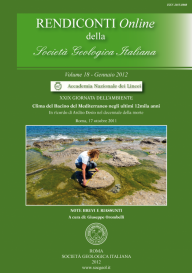
The use of stable carbon isotopes in palaeoenvironmental studies in archaeology: the example of Arslantepe (Malatya, Eastern Anatolia) from 5300 to 3950 years BP
Ilaria Baneschi (*), Alessia Masi (**), Laura Sadori (**) & GiovanniZanchetta (***)
(*) IGG-CNR, sezione di Pisa, Pisa.
(**) Dipartimento di Biologia Ambientale, Università La Sapienza, Roma. E-mail: alessia.masi@uniroma1.it
(***) Dipartimento di Scienze della Terra, Università di Pisa, Pisa.
Volume: 18/2012
Pages: 8-11
Abstract
Excavations at Arslantepe have brought to light a lot of archaeobotanical material dating from 5300 to 3950 years BP. The archaeobotanical studies highlighted the presence of various botanical taxa preserved by charring. The great diversity in founding taxa and the selective use of wood can be either due to a choice or selection or even to an environmental availability. Stable carbon isotope analysis was carried out to disentangle the human choice and climate variation. In fact, δ13C values of both fresh and charred wood are environmental proxies and are related to drought stress.
Analysis of selected fossil woods (deciduous Quercus and Juniperus sp.) and caryopsis (Triticum dicoccon and Hordeum vulgare) from the archaeological site were carried out. Fresh plant parts (leaf and branches) of the same taxa have been sampled in the Arslantepe area.
A lot of studies correlated cultural changes with environmental factors. At Arslantepe a number of important changes are found. It is not clear, however, if the significant variations found in plants use by the successive settlers are due to cultural choices or to environmental changes. Independent information on environmental variation obtained using isotope analysis, will help archaeobotanical studies to discriminate cultural and environmental changes.
Keywords
Get Full Text